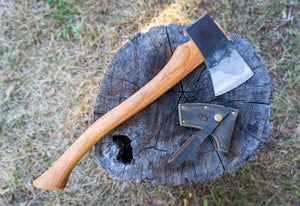
Williamsburg Villager January 2020
Looking forward with “2020 Vision”!!
By David Crane
Starting you out with the first of many 20/20 puns for the year. New Year’s Day and January are a good reflection point in trying to start with a new focus and understanding of what lays ahead. I do the same here at the store and museum. I am always looking for new and better ways to keep myself on task and organized.
At age 51, I have yet to find the perfect system. I use a combination of technology and paper. At this point, I have three paper calendars and one all-encompassing Google calendar to try to keep up with all aspects of my life, my wife’s, my kids’ and the businesses’.
I think the hardest part is to take a few minutes each day to sit and look at all of these calendars and see what is coming up and what needs to get done. This newsletter for instance. I attempted to write it on the 20th. Today is the 27th. Last month was well after the 1st of December. I don’t find that acceptable to myself, and surely not to those of you who pay for a subscription. To you, I apologize. I’m working on a plan to get better.
And isn’t that what we all try to do in a New Year? Sure, we could do it any day of the week, month or year, but January 1st just seems like a great time. All the YMCAs, gyms, and workout studios will be packed the first week as everyone tries to be the new “them” at the first of the year. I have always heard it takes about seven weeks for something to become a habit. There is the small goal. If you start something new, try to make it till the end of February. We’ll see how I do.
A few changes will be coming in January. I hope to get a new POS (point of sale) system for Marlene’s restaurant. This will allow me and Joann to track the sales of menu items and pricing as we go forward.
As a small restaurant in “the middle of nowhere,” we struggle to keep as busy as we need to be. Inflationary pressures, especially in the area of minimum wage, are a constant worry. We try to keep prices at an affordable level as best we can. But in a market-based economy, when costs increase, prices may have to also. We’ll keep a keen eye on it and tighten up where possible. The more business we attract throughout the year will be the best way to keep prices in check.
At the store, I will be going to the Outdoor Retailer Show in Denver at the end of January to find new items and purchase our fall and winter deliveries for the season. I have already ordered some products and, if anyone can look ahead at what the weather will be each month and how the economy will be running, let me know! We will also be upgrading our security system and our website. Maybe even a new coating on the roof, too!
As always, we appreciate you as customers. Keep up with us in our stores, online, on social media, and please spread the word about our beautiful Downtown Williamsburg.
Native Edible Plants are Naturals at Prairie Fork
by Nadia Navarrete-Tindall - Native Plants Specialist
Happy New Year to all!! You may think that winter is not a good time to talk about native plants, but if you don’t want to get outside yet, you can start planning now how you can protect and enhance your backyard for birds and yourself. The best time to establish native plants can be late winter, early spring or later in the fall.
In this column, for the last year, we have discussed a handful of edibles like persimmon, elderberry, spicebush, mountain mint and sunchoke (aka Jerusalem artichoke). We wanted to increase appreciation for native plants and inform about their uses for human consumption and wildlife to honor the life of Pat Jones, who was passionate about nature. A series of native plant demonstration gardens established per her request are maintained for education.
In 2020, we will describe other plants present at Prairie Fork Conservation Area, like cup plants, goldenglow, smooth sumac, and stinging nettle. The latter is a source of a long list of nutrients and can be consumed after proper preparation. You do need to wear gloves during the harvest of stinging nettles because they are called that for a reason!
All across Missouri and other states, we can find a variety of native plants that can be consumed as greens, teas, in stews or for flavoring, the way American Indians did before the arrival of the Europeans. Settlers adopted many of them in their diet and these foods continued to be used commonly until recently in our history. Many of these plants are mentioned in native edibles books, but usually, only a few of them are consumed regularly.
At Prairie Fork and elsewhere, these and other native edible trees and forbs feed and protect insects, birds and other wildlife any time of the year. Several of these plants, like spicebush, are host plants for butterfly larva and serve as their food source. This means that while we can prepare a hot tea with the leaves, a butterfly nursery is in the making in our own yard. One has to be mindful that these larvae may not be attractive to some, but by knowing how beautiful the adult butterfly will be, they should be embraced by everyone in their own yards.
Native plants can serve multiple purposes; they can be established in pastures for cattle, sheep and goats and can help protect farmland from erosion. Some like elderberry are being grown as specialty crops in Missouri. Elderberry can be grown in windbreaks or hedgerows in combination with other woody species like wild plum, paw paw, smooth dogwood, wahoo, spicebush, wafer ash and red cedar.
Red cedar (Juniperus virginiana) is a native tree that spreads easily and also provides escape cover for birds. Fruit-eating birds like robins consum

e the berries in winter, and cedar waxwings are named after the fact that red cedar is one of their favorite foods in winter. See photo of cedar waxwings by Randy Tindall eating ash flowers in early spring.
There are plenty of species to choose from, of the more than 2000 species of plants native to Missouri and the Midwest. Some grow better in dry conditions and some prefer wet habitats. Some tolerate shade and others grow better under full sun. Most of them have a wide range of adaptation, and under these times of extreme and unpredictable weather natives can be very hardy and resilient.
Pat Jones was surrounded by all of these and more during her life at Prairie Fork, and she loved them all, along with the wildlife they encouraged and protected.
If you are interested in learning more about native edible plants, check Jan Phillips’ award-winning book Wild  Edibles of Missouri (1979) or 2011 Cooking Wild in Missouri (2011) by Bernadette Dryden. The first one can be downloaded online and the latter is for sale as a hard copy. Both books were published by the Missouri Department of Conservation.
Edibles of Missouri (1979) or 2011 Cooking Wild in Missouri (2011) by Bernadette Dryden. The first one can be downloaded online and the latter is for sale as a hard copy. Both books were published by the Missouri Department of Conservation.
One word of caution is that before you start consuming edible native plants, be sure you know how to identify them. You can have your own little supermarket by planting some of these natives right in your own backyard and beautify your surroundings by creating butterfly corridors. Check the Grow Native! website for more information.
Sweet Sour Cocktail Meatballs
by Rita Heitzman
- 2 lbs ground beef
- 1/3 cup parsley flakes
- 2 tbsp minced dry onions
- 1 bottle chili sauce
- 1⁄4 tsp pepper
- 1 tbsp lemon juice
- 2 eggs
- 1 cup cornflake crumbs
- 1⁄2 tsp garlic powder
- 1 lb can cranberry sauce
- 2 tbsp soy sauce
- 1/3 cup ketchup
- 2 tbsp brown sugar
Heat oven to 350 degrees. Combine beef, corn flakes, parsley, eggs, soy sauce, pepper, garlic powder, ketchup and minced onions. Form into small balls and arrange in a roasting pan.
Combine cranberry sauce, brown sugar, lemon juice, and chili sauce. Cook over moderate heat stirring occasionally until mixture is smooth and cranberry sauce melts.
Pour over meatballs and bake for 30 minutes.

The Williamsburg Villager is provided by Crane's Museum and Shoppes. Please submit any announcements to David Crane at Crane's Country Store located next door to the museum by the 15th of each month to ensure publication.
Annual subscriptions are available for a $12.00 donation to the museum.
Crane's Museum & Shoppes 10665 Old US Hwy 40 Williamsburg, MO 63388 877-254-3356 www.cranesmuseum.org
Crane's Museum is a Regional History Museum located in Williamsburg, MO. We invite visitors of all ages to enjoy a step back in time. Enjoy breakfast or lunch in Marlene's Restaurant, shop for gifts at Town House Treasures, or get ready for any season at Crane's Country Store's Clearance and Closeout Shop.









